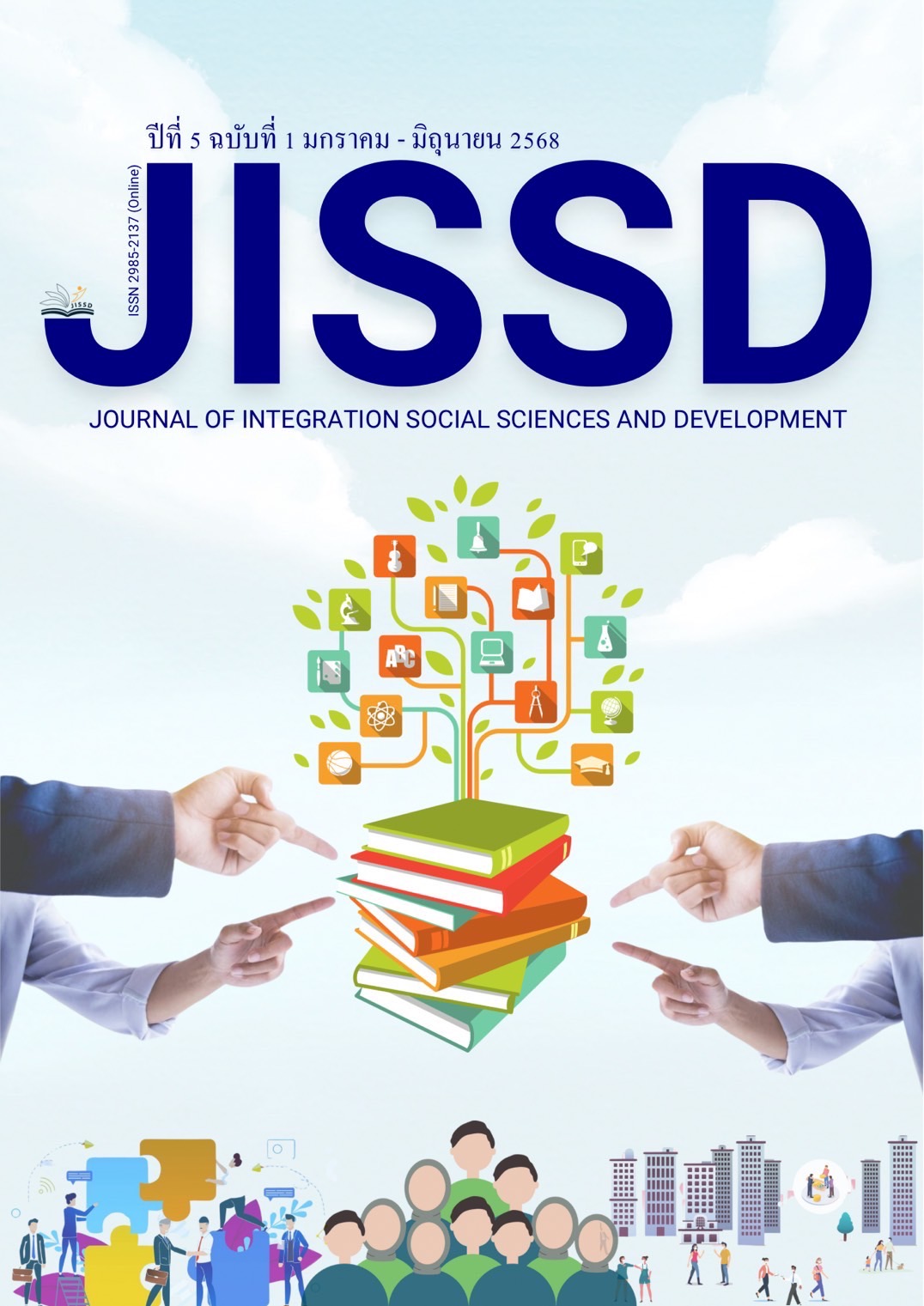Guidelines for Management and Problem Solving to Reduce Human Rights Violations for Thai Youth in Higher Education
Main Article Content
Abstract
This research aimed to 1) understand the issue of reducing human rights violations, 2) assess the needs regarding reducing human rights violations, and 3) explore management and problem solving approaches to reduce human rights violations. This research used mixed-method research. The samples 50 undergraduate students, selected through purposive sampling, 545 undergraduate students, selected through two-stage sampling, utilizing proportional stratified sampling, simple random sampling used in each stage and 8 university lecturers and independent scholars related to human rights violations, selected through purposive sampling. The instruments used were group discussions, a needs assessment form with 8 aspects, each containing 5 items, totaling 40 items on reducing human rights violations for Thai youth in higher education, and semi-structured interview form with 6 questions. Data analysis involved needs assessment evaluation and qualitative analysis using content analysis (CA) and thematic analysis (TA) and found that 1) Reducing human rights violations for Thai youth in higher education consists of 8 components: Beauty Standards, Extensive Language, Religious Equality, Impartial for Youth, Gender Equality, Health problems, The right to dress and Sound pollution. 2) Component 7, the right to dress, was identified as the most needed (PNImodified=0.099), followed by Component 2, Extensive Language. (PNImodified=0.0089), and 3) Guidelines for Management and problem solving to reduce human rights violations, emphasizing freedom of expression that is consistent with social appropriateness, promoting acceptance of cultural differences and individual identities.
Article Details
References
ชาญชัย ฤทธิร่วม. (2562). วิเคราะห์ความเหลื่อมล้ำทางสังคมด้านการศึกษาของพลเมืองชายขอบ. วารสารวิชาการวิทยาลัยบริหารศาสตร์, 2(4), 49-60.
ธนพล พานิชย์ และ อรทัย อิ่มใจ. (2566). การใช้สื่อการเรียนการสอนที่หลากหลายเพื่อพัฒนาทักษะภาษาและการเข้าใจ วัฒนธรรม. วารสารการศึกษาภาษาไทย, 28(3), 134-146.
นพรัตน์ สกุลชัย และ ศิริวรรณ ธรรมศรี. (2566). การสร้างสภาพแวดล้อมที่ปลอดบุหรี่ในสถาบันการศึกษาและผลกระทบต่อสุขภาพ. วารสารการศึกษาสุขภาพ, 15(2), 45-59.
ประจักษ์ ก้องกีรติ. (2561). การศึกษาและสิทธิมนุษยชนในสังคมไทย. กรุงเทพฯ: สำนักพิมพ์มหาวิทยาลัยธรรมศาสตร์.
รัฐธรรมนูญแห่งราชอาณาจักรไทย พุทธศักราช 2560. (2564). ราชกิจจานุเบกษา, เล่ม 134 ตอนที่ 40 ก,. สำนักงานศาลรัฐธรรมนูญ.
วรพล พิณทอง. (2563). การยอมรับความหลากหลายและการสร้างสภาพแวดล้อมที่เป็นธรรมในสถาบันการศึกษา. กรุงเทพฯ:สำนักพิมพ์จุฬาลงกรณ์มหาวิทยาลัย.
สำนักงานคณะกรรมการสิทธิมนุษยชนแห่งชาติ. (2563). สิทธิมนุษยชนศึกษากับการพัฒนาที่ยั่งยืน. สืบค้นจากhttps://static.nhrc.or.th/file/content/pdf.
สำนักงานเลขาธิการสภาผู้แทนราษฎร. (2559). เจตนารมณ์/นโยบายหัวหน้าคณะรักษาความ สงบแห่งชาติ. สืบค้น วันที่ 1 กันยายน 2567, สืบค้นจาก http://library2.parliament.go.th/giventake/ncpo. html.
สุพัตรา สุขไพบูลย์. (2564). การส่งเสริมภาษาถิ่นในการศึกษาของมหาวิทยาลัย: การลดการเลือกปฏิบัติทางภาษาและส่งเสริมความเข้าใจ. วารสารการศึกษาพื้นบ้าน, 30(1), 78-89.
สุวิมล ว่องวาณิช. (2562). การวิจัยประเมินความต้องการจำเป็น. (พิมพ์ครั้งที่ 4). กรุงเทพฯ: สำนักพิมพ์แห่งจุฬาลงกรณ์มหาวิทยาลัย.
Bell, J., & Clark, M. (2022). Dress Codes and Freedom of Expression in Universities: A Path to Inclusivity. International Journal of Education, 40(1), 33-47.
Booth, T., & Ainscow, M. (2016). The Index for Inclusion: Developing learning and participation in schools (3rd ed.). Centre for Studies on Inclusive Education.
Department of Education. (2012).The Equality Act 2010. available online at www.education.gov.uk/aboutdfe/policiesandprocedures/equalityanddiversity/a0064570/the-equality-act-2010.
Flew, A. (1984). Title of the article. Title of the Journal, Volume (Issue), 306.
Gifford, E., & Simpson, M. (2023). Cultural Diversity in Higher Education: Language, Culture, and Identity. Journal of Educational Studies, 55(1), 34-47.
Hughes, A. (2019). Developing effective leadership strategies for schools. Journal of Educational Management, 15(2), 123–140.
Moreno, E. (2016). The contributions of the ombudsman to human rights in Latin America, 1982 2011. Latin American Politics and Society, 58(1), 98-120.
Nguyen, T., & Tran, P. (2022). Language, Culture, and Inclusion: Promoting Multilingual Education in University Campuses. Journal of Language and Culture, 50(4), 125-137.
Nussbaum, M. C. (2000). Women and human development: The capabilities approach. Cambridge University Press.
Sirisrisak, T. (2020). Challenges of higher education students in Thailand: A study on adaptation and coping strategies. University of Thailand Press.
Taylor, S. P., & Silva, J. A. (2020). The evolution of human rights: From the Universal Declaration to global activism. Human Rights Quarterly, 42(4), 881-902.


